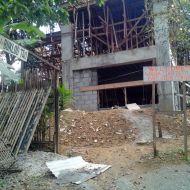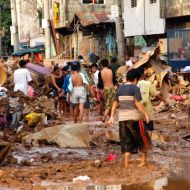The D.I.Y. Disaster Plan: How Informal Networks Battled Bangkok’s Worst Flood
Photo credit: Giorgio Taraschi
Please click here to read the story summarized below.
The 2011 Bangkok floods were the worst natural disaster in Thai history. Hundreds died, millions were affected and the monetary toll reached the tens of billions. But the outcome could have been even worse had neighborhood-level informal social networks not quickly mobilized to carry out their own responses to the catastrophe.
In cities like Bangkok, where government cannot always be counted on during times of crisis, such social networks are crucial to people’s survival. But a growing body of research suggests such networks can benefit all cities – indeed, recent storms in New York and New Orleans have shown how important citizen-led response can be as storms increase in frequency and sea levels rise.
In the first Forefront story of the Informal City Dialogues, Dustin Roasa reports from Bangkok to recount the tale of how one neighborhood, isolated by the rising water, improvised its own disaster response. He speaks with community members whose tight-knit social networks made the difference between life and death, as well as people who marshaled scarce resources to maximize a people-powered rescue mission. And he talks to experts in cities around the world about how they, too, are readying their own informal networks for the era of superstorms.
Forefront stories for the Informal City Dialogues are offered free of charge. Click here to read our first Forefront, “The D.I.Y. Disaster Plan,” and click here to read our other coverage of Bangkok.







